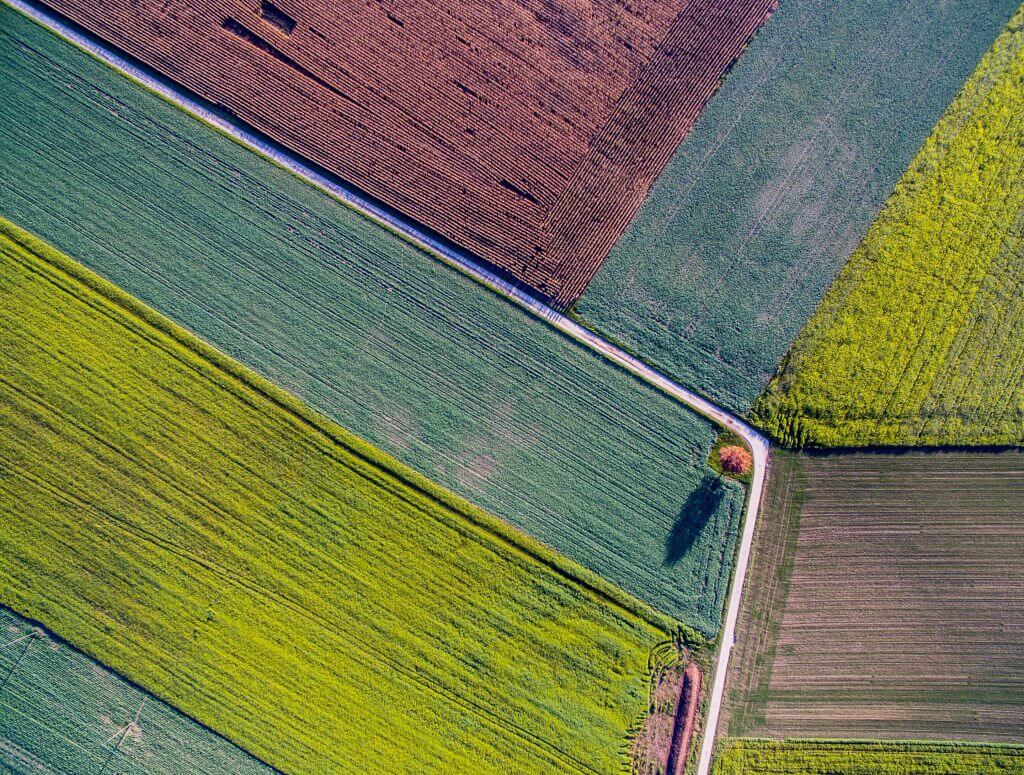
Using technology to identify crop types early in the season, without entering the field (Image Credit: Phys.org)

A new technological approach developed by University of Minnesota researchers will allow key stakeholders to identify important crop types earlier in the season than ever before.
Satellite imagery has long been used by agricultural agencies to tell what crops are grown in the field. This allows stakeholders to forecast grain supplies, assess crop damage due to environmental factors and coordinate supply-chain logistics.
While this information is vital, currently available crop mapping products are unable to provide these statistics early in the farming season. For example, the crop data layer (CDL), a national crop mapping product by the USDA National Agricultural Statistics Service, is often not released until four to six months after the fall harvest. This is due to the lengthy ground information collection process that is required for training the backend algorithm for separating crops from satellite imagery.
In a study recently published in Remote Sensing of Environment, University of Minnesota researchers explain their development of a new method that would allow stakeholders to know where corn and soybean crops are grown as early as July, with similar accuracy to the USDA CDL, and without the need for ground surveys.
With satellite data availability growing rapidly and advances in artificial intelligence and cloud computing, the bottleneck of satellite-based crop type mapping has shifted towards a lack of ground truth labels, which are records of crop types at specific locations. In such cases, scientists have attempted to use outdated labels to identify crops in the target year.
For example, to map crop types in 2022, scientists would develop a model using labels collected in 2021, 2020, or even earlier in order to develop a model when a new ground survey is not available or not feasible. However, this type of model often fails because changes in soil, weather and management practices in a given year can change how crops look in satellite imagery.
To bypass the need for collecting ground labels, the method developed by this research team generates pseudo-labels (they are called “pseudo” because these labels are not collected from fields) in any target year based on historical crop type maps.
This method mimics how humans identify objects based on their relative positions (also called topology relationships) on a picture and uses a computer-vision model to identify corn and soybean based on their topology relationships in a two-dimensional space derived from satellite imagery. These generated pseudo-labels have similar quality to field-collected labels and can be used for the important task of crop type mapping in the early season.
“This is a paradigm-shifting approach that uses computer vision technology to mimic how humans identify different things on photos. This is not only fun but also powerful because it helps to save the time and labor of conducting field surveys and allows us to accurately predict crop types as early as July,” said Zhenong Jin, Ph.D., assistant professor in the Department of Bioproducts and Biosystems Engineering at the University of Minnesota.
“We found stable topology relationships existed for different crops in different years and different countries, indicating that our approach has the potential to be extended to a general framework that works for many different scenarios,” said Chenxi Lin, a Ph.D. candidate and first author of the work advised by Jin.
The study also found:
- The approach could generate pseudo-labels of similar quality to field-collected labels for different crops grown in different years and different regions.
- In the U.S., the accuracy of crop type mapping based on generated pseudo-labels could approximate USDA’s cropland data layer (CDL) product at least six months earlier.
- In northern France, this method can help significantly reduce the number of ground labels needed to produce accurate crop maps, which can be a challenge due to the number of crops grown in the region.
In addition, the high-quality, early-season crop type maps generated from the proposed approach are also useful for a variety of other activities.
A comprehensive and timely monitoring on the insured croplands is beneficial for insurance companies to better design their products. In addition, the crop acreage and production estimation can help commodity traders better project prices, and hedge accordingly.
As the researchers look ahead, they acknowledge that the implementation of this approach relies on sufficient historical ground truth labels, which is not an issue for resource-abundant regions like the United States, but is a limited resource for regions like Africa.
However, implementing the approach in underdeveloped countries like many in Africa could have more profound implications for the ultimate goal of achieving a food-secure world. The team plans to expand the framework presented in this study to those regions by incorporating other advanced deep learning algorithms to reduce the need for historical labels.
Explore further
Chenxi Lin et al, Early- and in-season crop type mapping without current-year ground truth: Generating labels from historical information via a topology-based approach, Remote Sensing of Environment (2022). DOI: 10.1016/j.rse.2022.112994
Using technology to identify crop types early in the season, without entering the field (2022, March 31)
retrieved 1 April 2022
from https://phys.org/news/2022-03-technology-crop-early-season-field.html
part may be reproduced without the written permission. The content is provided for information purposes only.





